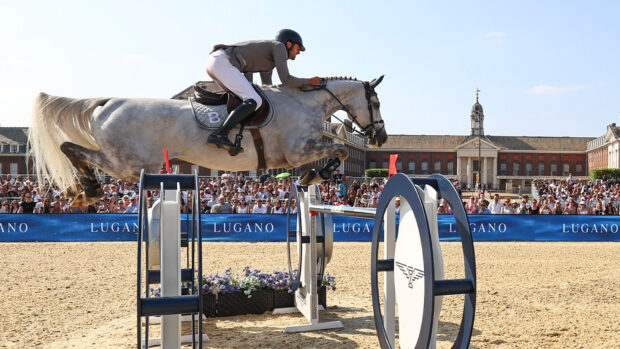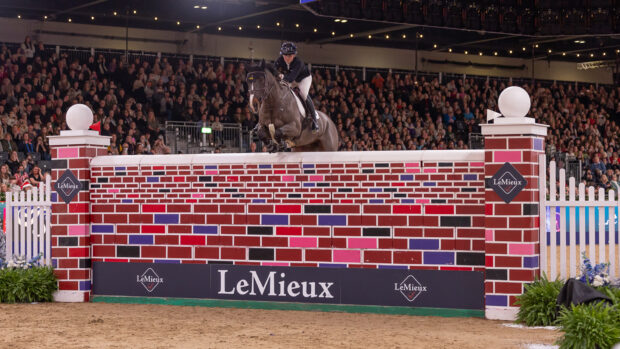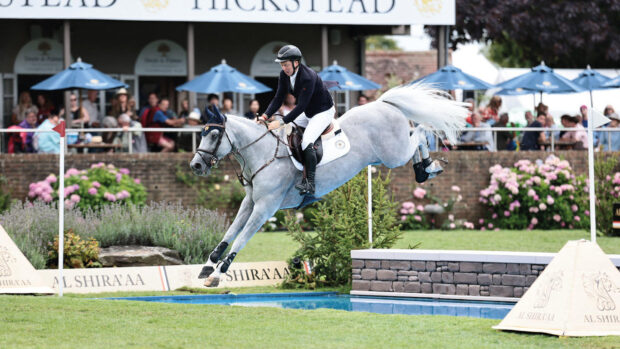Expert advice on bridging the gap between breaking and show jumping young horses
From day one, a show jumper’s training revolves around precision and obedience, both of which need countering with relaxation, says trainer Janet Barton, who works her youngsters straight from the field.
“All ages go out into the field every day. I would rather see a muddy, happy horse than a miserable, immaculate one. The youngsters come in an hour before they work, learn to stand to be groomed and have rugs on, do their work, then go out again.”
Janet produces her horses from ‘raw’ and works with them until they are established at competitions.
“Keeping same regime makes them feel secureas they learn. If you experience a problem then you must nip it in the bud, but I am careful not to get at them all the time. They have to know what’s right.”
With many acres of hilly, stone-walled pastures to ride across, plus an outdoor school,Janet avoids busy local roads.
“I want my youngsteres to be fluent and going forward in all three paces. The hills are great for to teach them balance without interference from the rider.”
Up on the exposed Yorkshire hills, many just-backed horses are prone to a good buck, in which case Janet runs them loose round the school before riding. But lunging is out: “It mixes up the stages when they are learning ridden work.”
Polework begins early in their fourth year, and a visit to a show “to get used to going on the lorry and to have a look round” usually precedes their first small, indoor competition.
Janet acknowledges that four-year-olds can vary tremendously in maturity. “Continental and thoroughbred types are usually very quick, half-breds much slower, and anything with Cleveland Bay in it takes forever.”
Janet’s four-years-olds are turned out for the summer. “It’s tempting to keep them going if you have a good one, but short-sighted, especially if the ground is hard.”
Janet Barton’s training timetable
Three-year-olds: working from the field in walk, trot and canter. Then turned out.
Four-year-olds: from January to March, pole work begins, plus more “gathering up” in the flat work. A couple of small shows before being turned out for the summer.
Four-to-five-year-olds: in their four-year-old autumn, horses are aimed at indoor British novice, discovery and possibly newcomers competitions.
“If they seem very good, they jump until Christmas, then have a rest ready to start again for the summer. Otherwise they keep going through the winter.”
Five-year-olds: Talented five-year-olds will be jumping Foxhunters and the odd Grade C by the summer’s end.
Most common mistake: chasing the clock over small fences instead of going clear over slightly bigger ones.



